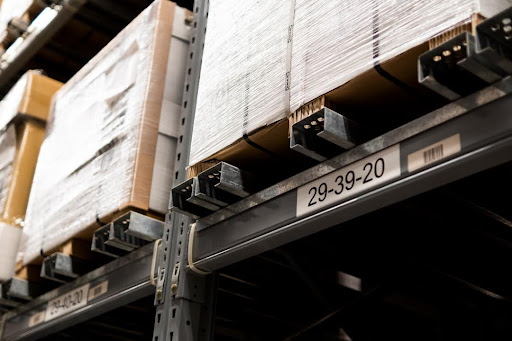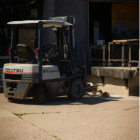Forklifts are a vital part of many Australian industries. They streamline operations and boost productivity.
However, they also pose significant safety risks. Accidents can lead to injuries, fatalities, and costly damages.
This makes forklift safety a top priority. It’s not just about compliance with Australian safety standards. It’s about creating a secure workplace for everyone.
Choosing the right forklift supplier or dealer is a crucial first step. They can provide quality equipment and valuable support.
But safety doesn’t stop at procurement. Regular maintenance, operator training, and a safety-oriented culture are equally important.
This guide will provide practical tips for enhancing forklift safety in your workplace. It’s a must-read for anyone involved in forklift operations in Australia.
Importance of Forklift Safety in Australia
Forklift safety is crucial in Australia, given its strong industrial and logistics sectors. The country adheres to strict safety regulations to prevent accidents and ensure employee well-being.
The consequences of neglecting forklift safety can be severe. These include not only physical injuries but also financial setbacks from lost productivity and repairs. Maintaining high safety standards protects both workers and your business’s bottom line.
By prioritising safety, businesses can foster a more secure and efficient workplace. This commitment reinforces trust with employees and can potentially reduce insurance liabilities.
Choosing the Right Forklift Supplier
Selecting the right forklift supplier in Australia is a vital decision. A reputable supplier provides reliable equipment and valuable support services that keep your operations running smoothly.
Look for suppliers with a strong reputation and positive customer testimonials. An experienced supplier will understand your specific needs and help you choose the most suitable forklifts for your workplace. Additionally, a good supplier offers comprehensive after-sales services, including maintenance and training, which are crucial for long-term safety and efficiency. Investing time in choosing the right supplier pays off by ensuring reliable and safe forklift operations.
Adhering to Australian Safety Standards
Compliance with Australian safety standards is essential for forklift operations. These standards ensure that all safety measures are in place to prevent workplace accidents and injuries. Adhering to these regulations protects your employees and helps avoid legal repercussions.
Key components of Australian forklift safety standards include:
- Regular equipment inspections and maintenance
- Comprehensive operator training and certification
- Implementation of safety protocols and emergency procedures
By following these guidelines, businesses can create a safer working environment. Adhering to the standards fosters a culture of safety and compliance, benefiting both employees and operations. Staying informed about any updates in safety requirements is also crucial for maintaining compliance and ensuring workplace safety.
Common Forklift Hazards and Mitigation Strategies
Operating forklifts involves several inherent hazards. Awareness and preventive measures are crucial in minimising risks. Identifying potential dangers is the first step towards ensuring workplace safety.
Some common forklift hazards and strategies for mitigating them include:
- Tip-overs: Avoid sharp turns and ensure load stability.
- Collisions: Implement pedestrian exclusion zones and use mirrors for better visibility.
- Falling Loads: Secure and properly stack loads.
By understanding these hazards, companies can implement effective control measures. Providing regular training and promoting a safety-first mindset among employees can significantly reduce accidents. Safety measures should be regularly reviewed and updated to address any new risks.
Regular Maintenance: Key to Preventing Accidents
Regular maintenance is essential for the safe operation of forklifts. Well-maintained forklifts function efficiently and reduce the likelihood of breakdowns. Routine checks can identify potential issues before they lead to serious accidents.
Maintenance should include inspecting tires, brakes, and hydraulic systems. Addressing wear and tear promptly ensures that forklifts remain reliable and safe to use. Preventative upkeep extends the equipment’s lifespan while safeguarding the workforce. Consistency in maintenance practices bolsters trust and safety across the workplace.
Operator Best Practices for Workplace Safety
Forklift operators play a crucial role in ensuring workplace safety. Adhering to best practices can greatly reduce accidents and enhance productivity. Operators should always be vigilant and maintain full focus while operating machinery.
Here are some key best practices for operators:
Perform pre-operational checks before starting the forklift.
- Perform pre-operational checks before starting the forklift.
- Keep a safe speed within designated limits.
- Ensure clear communication with nearby workers.
Operators should avoid distractions and refrain from using mobile devices while driving. Following these guidelines helps create a safe and efficient work environment, minimising risks and maximising operational efficiency. Safe practices not only protect the operator but also their colleagues and the facility.
The Role of Training and Certification
Proper training and certification are essential for safe forklift operations. They equip operators with the skills to handle equipment effectively and safely. Training programs cover safety standards and practical handling techniques, ensuring operators understand the mechanics of their machines.
Certification is not just a formality. It’s an assurance that the operator is competent and meets industry standards. Employers must prioritise regular training updates to keep skills current. This commitment reduces accident rates and increases workplace efficiency, fostering a culture of safety awareness and professionalism.
Investing in comprehensive training ultimately benefits everyone involved in the operation of forklifts.
Creating a Safety-Oriented Culture
Fostering a safety-oriented culture is crucial for reducing workplace incidents involving forklifts. It begins with clear policies and leadership commitment to safety. Employers must promote open communication regarding safety concerns and encourage employee feedback.
Engaging employees in safety discussions boosts their commitment to safe practices. Regular safety meetings and training refreshers keep safety top-of-mind. Recognizing and rewarding safe behaviour can strengthen this culture, motivating employees to prioritise safety in their daily tasks. This collective effort leads to a more secure and productive workplace environment.
Risk Assessment for Forklift Operations
Conducting a thorough risk assessment is vital for forklift operations. Identify potential hazards in the environment and evaluate their impact. This process helps in implementing effective safety measures tailored to specific workplace needs. Regularly updating and reviewing these assessments ensures ongoing protection against new and evolving risks.
Safe Loading and Unloading Procedures
Proper loading and unloading are essential for forklift safety. Ensure loads are secure and balanced to prevent tipping. Adhere to weight limits and stack items correctly to maintain stability. Always use the appropriate equipment for lifting, and verify that the pathway is clear before moving loads.
The Impact of Workplace Layout on Safety
A well-organised workplace is crucial for forklift safety. Design pathways to reduce congestion and improve visibility. Clearly marked lanes and designated pedestrian zones minimise the risk of accidents. Ensure adequate lighting and remove obstructions for smooth forklift operations. Optimising layout enhances efficiency and safety simultaneously.
Conclusion: Commitment to Continuous Safety Improvement
Forklift safety is not a one-time task but an ongoing commitment. By prioritising safety, workplaces can improve both productivity and employee well-being. Continuous improvement fosters a culture of safety, reducing risks and ensuring legal compliance.
Investing in regular training and safety audits keeps safety standards high. Adopting new technologies and engaging employees in safety discussions further contributes to a safer environment. A proactive approach can significantly lower accident rates, proving that safety is a valuable investment for any Australian workplace




